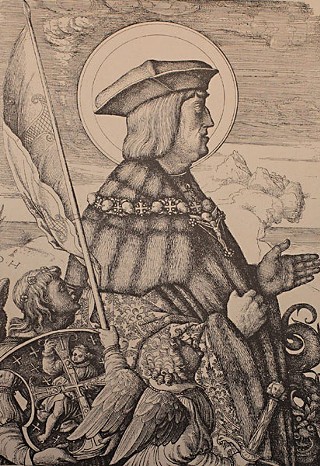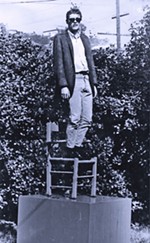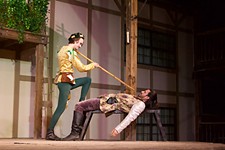'Imperial Augsburg: Renaissance Prints and Drawings, 1475-1540'
A traveling exhibition of prints places Augsburg at the center of artistic innovation
Reviewed by Andy Campbell, Fri., Nov. 15, 2013

Blanton Museum of Art, 200 E. Martin Luther King Jr., 512/471-7324
www.blantonmuseum.org
Through Jan. 5
Pay attention to paper. That seems to be the imperative emanating from "Imperial Augsburg: Renaissance Prints and Drawings, 1475-1540" at the Blanton Museum of Art. This exhibition, which originated at the National Gallery of Art and features graphic work made roughly between the first updrafts of the Italian Renaissance and the post-traumatic turmoil of the Reformation, maps a particularly productive time in the history of the southern Bavarian city of Augsburg, which is perpetually playing handmaiden to better-known Nuremberg in histories of Renaissance art. Like other metropolitan centers, Augsburg had its share of local artists, and they were essential cogs in that city's cultural life. The hearty patronage of Holy Roman Emperor Maximilian I didn't hurt either; so fond of Augsburg was Maximilian, that he was playfully dubbed its mayor.
Augsburg was a crucible of graphic experimentation. The armorer Daniel Hopfer pioneered the printmaking process of engraving by flattening out pieces of iron and incising his designs onto them. And hard to imagine today is the wonderment that master printer Erhard Ratdolt's multicolor woodblock prints would have elicited from contemporary viewers. Luckily, the process is also on view, in the form of the odd woodblock or engraving plate.
The wonderful thing about Northern Renaissance art (the prints and drawings from Augsburg are no exception) is that it can be seductively, invitingly goofy. In one engraving by Hopfer, a giant wooden beam is wedged into the eye of a man, who picks at the orbital of another man. It's a literal illustration of a parable from Matthew – "Why do you see the mote in your brother's eye and not the beam in your own?" – and it's stupendous, because the whole implausible scene is set in a local church. Other figures in the print mill about, doing their daily devotional thang, playing to the print owner's sense of piety and pride of place. Slow down long enough to look, and there's a whole world to see.
But there's one problem: the corny period music playing from speakers hidden in various corners of the galleries. This wouldn't be so noticeable if the exhibit downstairs, the ebullient retrospective-as-installation of Brazilian artist Waltercia Caldas, didn't use music infinitely better. There, the music comes through personal headsets, allowing listeners to let the score affect their meanderings. It may be harsh to liken the plinkity-pluckity madrigals piped through galleries upstairs to Muzak-playing mall courts or the edutainment of Medieval Times, but Blanton, you leave a critic no choice. The implication seems to be that viewers need a little sonic push to enjoy the show, and, as theatre folk are wont to say, that's playing down to your audience.
That, and it made us crave a turkey leg.












